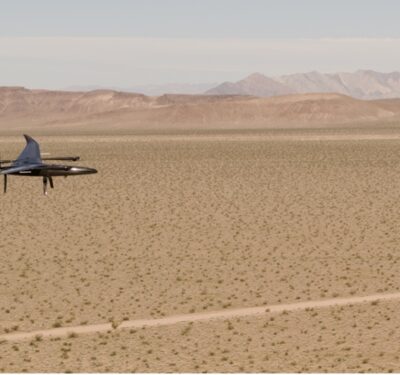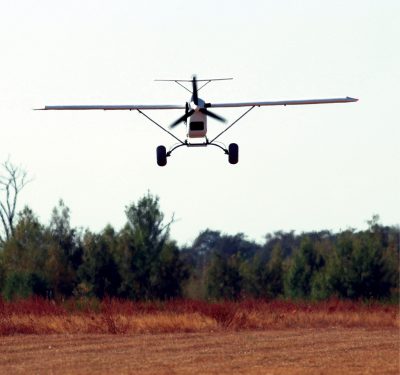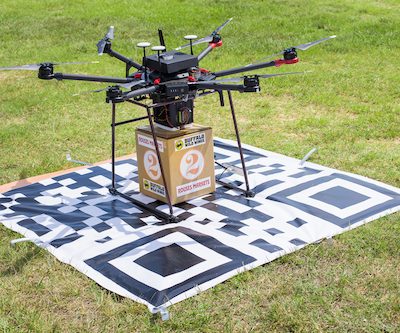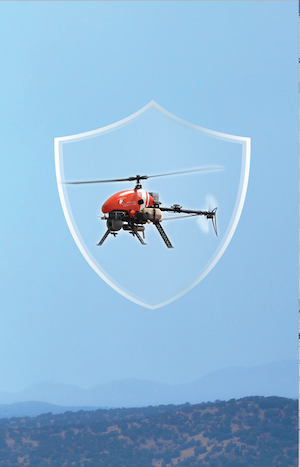 MIJI—Meaconing, Intrusion, Jamming and Interference—refers to disruption of the electromagnetic spectrum. In the case of UAS, technology can damage or overpower a navigation signal, allowing a hijacker to send a “wrong” message to make a drone land or take other unintended actions. So, when testing anti-jamming robustness, autopilot manufacturers may pit their technologies against other devices.
MIJI—Meaconing, Intrusion, Jamming and Interference—refers to disruption of the electromagnetic spectrum. In the case of UAS, technology can damage or overpower a navigation signal, allowing a hijacker to send a “wrong” message to make a drone land or take other unintended actions. So, when testing anti-jamming robustness, autopilot manufacturers may pit their technologies against other devices.
Miguel Angel de Frutos, chief technology officer of Madrid-based UAV Navigation, recently told Inside Unmanned Systems about an evaluation of its VECTOR advanced autopilot that sounded like an episode from Mad Magazine’s “Spy vs. Spy.” Replying to a client request, his company carried out robustness tests of an ALPHA 800 rotary-wing platform from Spanish counterpart Alpha Unmanned Systems. As de Frutos recounted it, the software pitted Vector’s flight control solutions, algorithms and Altitude Heading Reference System (AHRS) against another company’s anti-drone jamming guns. The venue was UAV Navigation’s own airfield near the Spanish capital, where the company’s experimental license allows this type of test.
“It was so funny,” de Frutos recalled. “Alpha hired a company that was providing anti-drone guns. He [the gun representative] was so happy because he thought he would be able to crash the unit in a few seconds. He had several different models of different guns, with different powers.
“We started flying and we executed a square pattern with the helicopter, from four different waypoints. At one of the waypoints, the guy on the team was ready with one anti-drone gun. He started with a smaller one—the signal was not high enough to produce any effect. There was an alarm, but we keep flying. They tried with a different model, and a different model, and at the end of the test, they used all the guns. And our system at that point, just reacted, and worked.
“We didn’t see any effect, so we put the helicopter in a lower altitude—20-25 meters—just to be sure that the signal from the anti-drone gun [would have a chance]. At that point, we decide to hover just in front, and they used them all. Under this amount of high power, the system autonomously recognized we were under attack so it raised the alarm to warn the operator and the helicopter continued flying, with just a small drift in navigation.”
How it Works
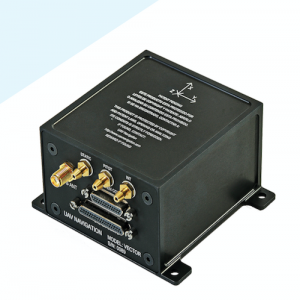 UAV Navigation combines a “private” ICD (Interface Control Document) with advanced estimation logics to prevent, analyze and detect interference or systems failure. The incorporated ICD and the interface algorithms resist interception by analyzing GNSS signals for anomalies, and by protecting radio links to allow a vehicle to fly even if the GPS falls to jamming. The company prides itself on sourcing high-quality IMU’s (Inertial Measurement Units) and calibrating them to its systems. Hardware is independently certified to electromagnetic interference (MIL-STD-461F) and environment stress (MIL-STD-810F) standards.
UAV Navigation combines a “private” ICD (Interface Control Document) with advanced estimation logics to prevent, analyze and detect interference or systems failure. The incorporated ICD and the interface algorithms resist interception by analyzing GNSS signals for anomalies, and by protecting radio links to allow a vehicle to fly even if the GPS falls to jamming. The company prides itself on sourcing high-quality IMU’s (Inertial Measurement Units) and calibrating them to its systems. Hardware is independently certified to electromagnetic interference (MIL-STD-461F) and environment stress (MIL-STD-810F) standards.
What’s Next?
UAV Navigation is developing what de Frutos describes as “a new product we call MCC—Mission Control Computer. With a Mission Control Computer, customers develop their own logics. For us, the Vector is a Flight Control Computer; however, some of our biggest customers want to modify specific logics. So, the MCC is like having all the elements from the Vector, with all we have learned from it, and they can develop their own logics.
“We think this technology has a future,” he continued. “First of all, the customer is able to modify or to add its own value, and also because of certification. Certification is the future of our sector. If you have a system that is certified, you cannot modify it. We can present them a certified FCC with all the critical safety-level features in one box—they just need to proof the MCC side.”



